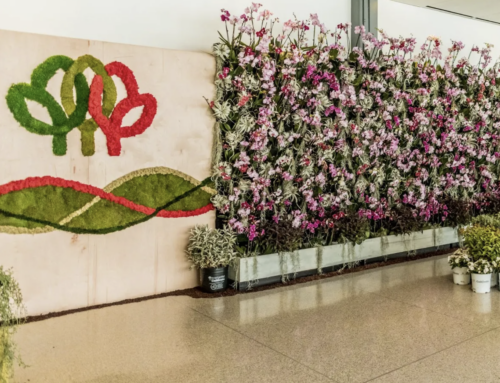In gardening, we may favor common, well-used, or well-known flowers for their dependability, familiarity, and/or nostalgic reasons. That’s a safe approach, but there is also the need to explore new plants or species we haven’t used in the past. Realistically we’ve got to be prepared to handle new challenges in sunlight, water, soil, insect/disease, pest pressure, and finding a plant the deer won’t eat. There is also value in introducing a fresh look to the landscape.
Geum was my favorite plant-find this past year, a noteworthy but underused flowering perennial. Pathetically fumbling and over-thinking the pronunciation, I resolved to log in my memory this fail-safe reference. Ask a teen a perplexing question, and they might pause and respond hesitantly, “Gee, um…” That’s it – “Jee-um.” Done.
Geum has been around for years, but unfortunately, I have only had limited experience with the plant. Over this past season, I’ve noted characteristics of this plant that have caught my interest and merit attention. The more I see Geum the more I feel the need to work it into garden plans. Most of the Geum species have a clumping, mound-forming habit. The Geum that I tended to had robust healthy foliage, quite clean of insect or disease damage. Most floral gardens are dominated by pink, purple, red, blue, yellow, and white. The orange or yellow flowers of Geum are a warm welcoming touch to a home landscape.


Those who prefer plants from native sources should consider Geum triflorum, aka Prairie Smoke. The “smoke” is a reference to what happens after the bloom. The fading flower forms a seed head that is a light, feathery gray plume and when in a cluster, resembles smoke. Not surprisingly, this American prairie native species prefers full sun, tolerates heat, drought and survives in a USDA Plant Hardiness Zone of 3 to 7. That’s a hardiness capability in environments ranging from polar bears to palm trees.
Spent blooms in the early to mid-summer can be deadheaded to prompt additional flowering. Consider leaving the fading flowers of late summer as some Geum blooms turn into fluffy seed heads, a unique, decorative feature that carries into autumn. Geum is usually considered only an evergreen in the milder climates, though here in Michigan, Geum is still effectively holding leaves into December this year.
With its dense mound of textured leaves, compact varieties of Geum are in that category of the “flowering” perennials that when planted in a mass, even without blooms, can be an attractive groundcover.
A truly encouraging quality at this time is that its preference by deer is quite low. I have not heard of any notable deer damage on Geum and sources I’ve researched list it as “resistant.” Nevertheless, age and experience won’t allow me to call it deer resistant, because we know how deer can suddenly change all that.
- Size: Compact varieties, 6-10” height and for the large hybrids with the extended flower stems, up to 30.”
- Zone hardiness: most are in the 5-7 range with the native Geum Triflorum being 3-7
- Light: Full sun to part shade
- Soil Moisture: medium, but in most cases, well-drained


Notable Hybrid Varieties on the Market:
- Mrs. Bradshaw
- Banana Daiquiri
- Firestorm
- Fireball
- Top Shelf Margarita
- Sea Breeze
- Red Dragon
- Alabama Slammer (Why name a flower after a jail in the deep south?)
And one that has become quite popular, is “Totally Tangerine.” This from the accomplished grower, Walters Gardens: “An incredible landscape performer; robust habit and extremely floriferous. Tall, strong stems carry loads of sterile, bright apricot to tangerine orange flowers.”
In a review of standout garden plants from 2020, no hesitation here, nor a juvenile “Gee, um…” from me, the Geum Flower is worthy of your garden plans.
-Rob McCartney, Horticulturist
Please feel free to contact me with any questions or for more info at: [email protected]




